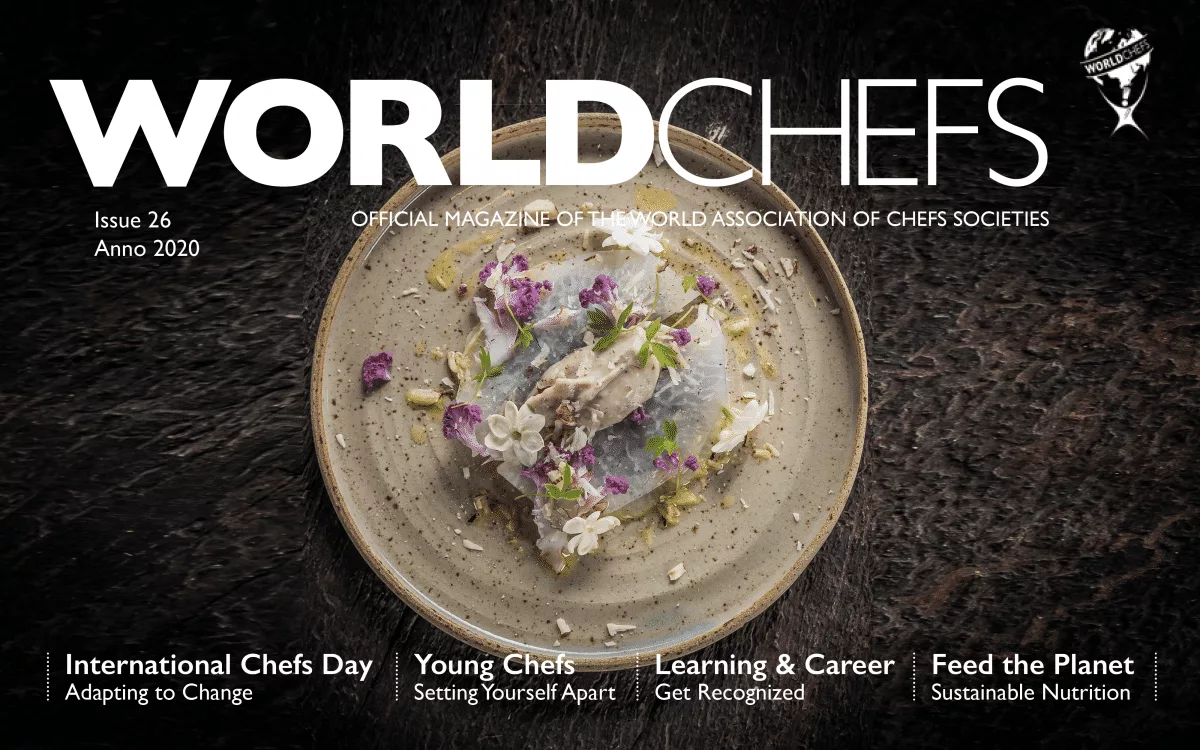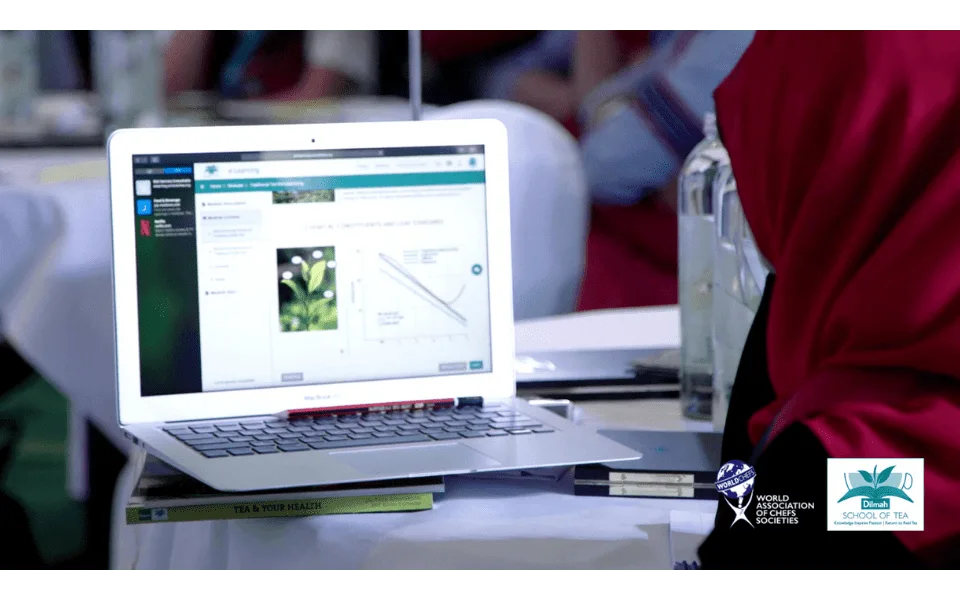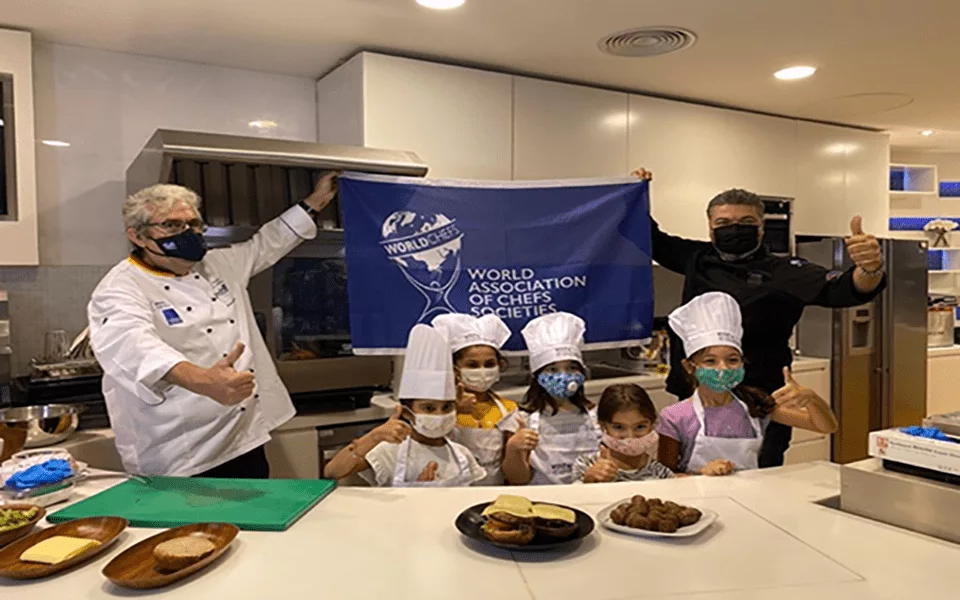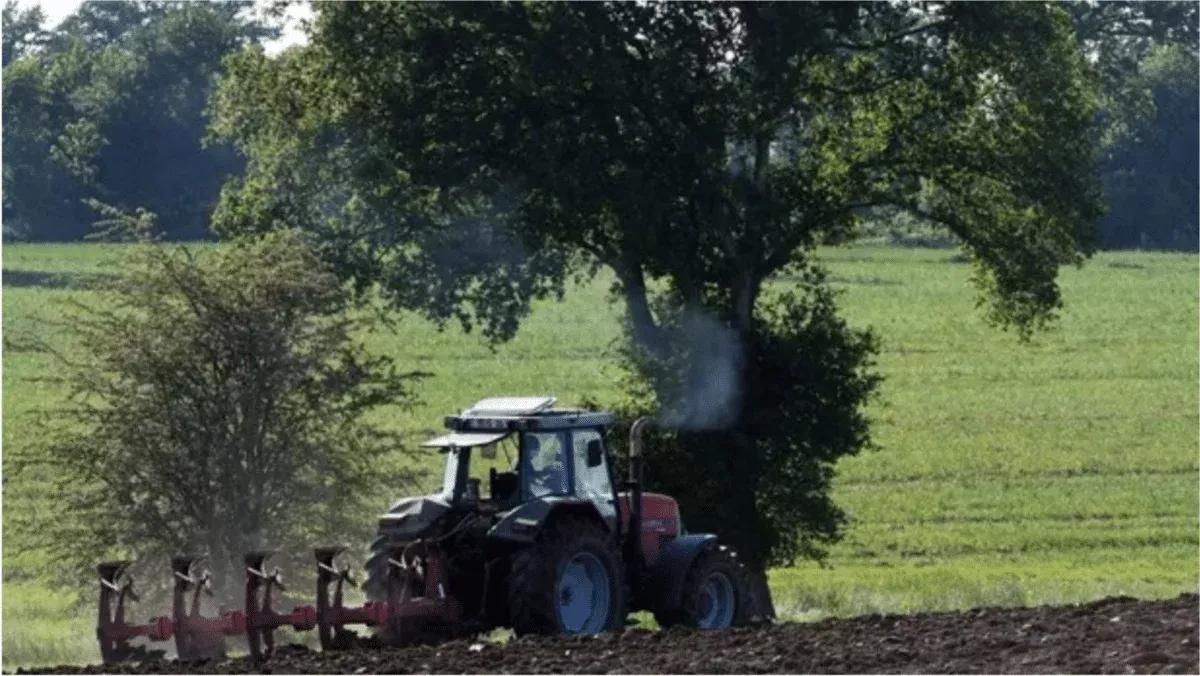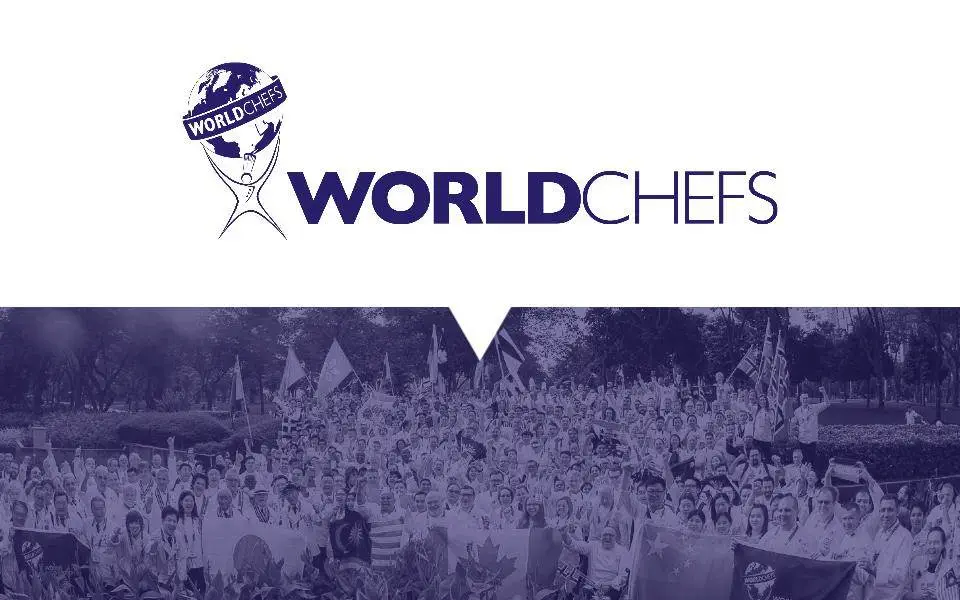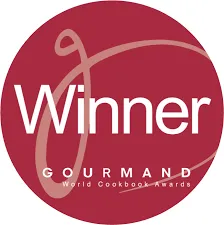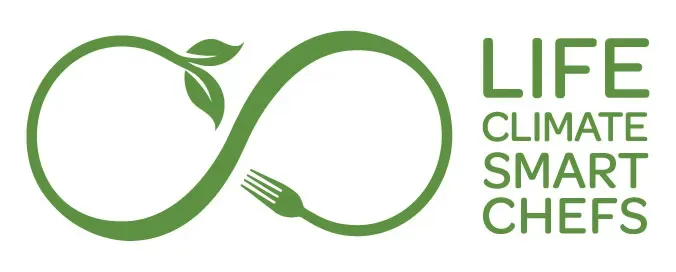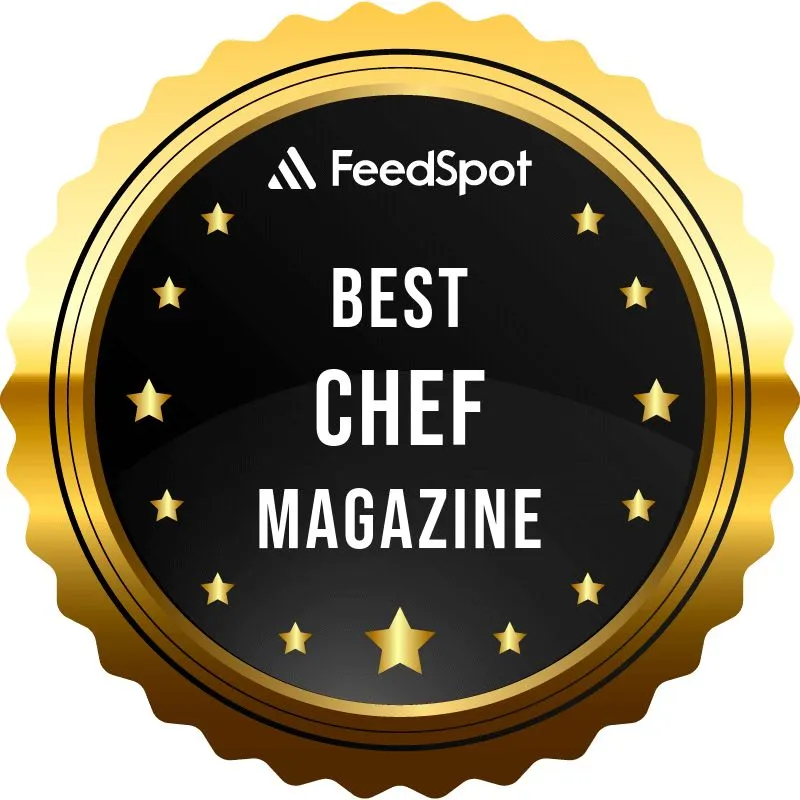World’s Top Chefs Coming to Wales Next Year for Prestigious Event
from the Culinary Association of Wales
Immediate: November 5, 2020 – Wales will welcome the world’s best chefs next year as the country hosts the prestigious Worldchefs Global Chefs Challenge Final 2020.
The Culinary Association of Wales (CAW) and its partners, the International Convention Centre Wales (ICC Wales), the Celtic Manor Resort and the Welsh Government, have accepted an invitation to bring the event to Newport from October 23-26, 2021.
The only major Worldchefs competition in 2021, the event will bring together the world’s top chefs to compete in the finals of three categories: the Global Chefs Challenge, the Global Pastry Chefs Challenge and the Global Young Chefs Challenge.
The Global Chefs Challenge and Worldchefs Village will be combined at the Celtic Manor Resort where the organisers hope to provide a platform for Welsh food and drink business to showcase their products to chefs from around the globe.
To add extra interest for Wales, Danny Burke, coach to the Junior Culinary Team Wales and ex-senior team captain, will be competing in the Global Chefs Challenge against 19 other finalists. Danny, who lives in Connah’s Quay and co-owns Olive Tree Catering in Runcorn, qualified for the final by winning the Northern Europe heat.
The CAW and the Celtic Manor Resort has a successful track record of holding Worldchefs’ events. In 2017, the country hosted a successful Worldchefs European Congress and, last summer, welcomed a Worldchefs board meeting.
CAW president Arwyn Watkins, OBE, managing director of Welshpool-based Cambrian Training Company, said: “Hosting a global event of this magnitude in Wales is a huge honour and undertaking, but the Culinary Association of Wales and its partners relish the challenge of welcoming the world’s best chefs next autumn. Preparations have already begun.
“We are very aware of the scale and significance of securing this prestigious event, which will be the only major Worldchefs event in 2021 and should therefore attract worldwide interest in Wales.
“The Global Chefs Challenge will provide a fantastic showcase of culinary skills and everything that Wales has to offer. Against the current backdrop of the Covid-19 pandemic, this announcement should be welcome news for the hospitality industry. Hopefully, the event will support the steps being taken to help Wales bounce back from the economic impact of this pandemic.”
Ian Edwards, chief executive of ICC Wales and Celtic Manor Resort, said: “We are delighted to bring this prestigious international event to our venues in 2021. Following the recent announcement that ICC Wales will play host to next year’s Conservative Spring Conference, this is another welcome boost as we look forward to bouncing back from what has been a devastating year for the events industry.
“Our culinary philosophy is a big part of what we do at ICC Wales and hosting this prestigious event would be a brilliant opportunity to showcase Wales’ wealth of produce as well as our growing food and drink industry to an international audience.”
Lesley Griffiths, Wales’ Minister for Environment, Energy and Rural Affairs, said: “Whilst we face the continued backdrop of the COVID-19 pandemic, it is, of course, very pleasing to see that the Celtic Manor Resort is due to hold the Worldchefs Global Chefs Challenge in 2021. I am pleased that organisations planning ahead for events next year are looking at Wales as a destination.”
Worldchefs is a global network of 105 chefs’ associations representing more than 10 million professional chefs worldwide.
Thomas Gugler, Worldchefs’ president, announced that Wales would be invited to host the Global Chefs Challenge after the country lost to Singapore by just four votes in online ballot in August to select the host country for the Worldchefs Congress and Expo 2024.
For more information on the Global Chefs Challenge, visit www.globalchefschallenge.org.
Picture caption:
The Celtic Manor Resort, which is to welcome the world’s best chefs next October.
*This release is available in Welsh below.
ABOUT WORLDCHEFS
The World Association of Chefs’ Societies, known as Worldchefs, is a dynamic global network of 110 chef associations worldwide. A leading voice in the hospitality industry, Worldchefs carries 91 years of history since its founding at the Sorbonne by the venerable Auguste Escoffier. Representing a mobilized international membership of culinary professionals, Worldchefs is committed to advancing the profession and leveraging the influence of the chef jacket for the betterment of the industry and humanity at large.
Worldchefs is dedicated to raising culinary standards and social awareness through these core focus areas:
Education – Worldchefs offers support for education and professional development through the landmark Worldchefs Academy online training program, a diverse network of Worldchefs Education Partners and curriculums, and the world’s first Global Hospitality Certification recognizing on-the-job skills in hospitality;
Networking – Worldchefs connects culinary professionals around the world through their online community platform and provides a gateway for industry networking opportunities through endorsed events and the biennial Worldchefs Congress & Expo;
Competition – Worldchefs sets global standards for competition rules, provides Competition Seminars and assurance of Worldchefs Certified Judges, and operates the prestigious Global Chefs Challenge;
Humanitarianism & Sustainability – Worldchefs Feed the Planet and World Chefs Without Borders programs relieve food poverty, deliver crisis support, and promote sustainability across the globe.
For more information about Worldchefs, visit us at www.worldchefs.org.
For more information on the Global Chefs Challenge, visit www.globalchefschallenge.org.
For more information about the Culinary Association of Wales, please contact Arwyn Watkins, OBE, Culinary Association of Wales president, on Tel: 07831 697494 or Duncan Foulkes, publicity officer, on Tel: 01686 650818.
*In Welsh below.
Chefs gorau’r byd yn dod i ddigwyddiad mawreddog yng Nghymru
Cymdeithas Goginio Cymru
Ar Unwaith: Tachwedd 5, 2020 – Bydd Cymru’n croesawu chefs gorau’r byd y flwyddyn nesaf wrth gynnal Her Fyd-eang Chefs Worldchefs.
Mae Cymdeithas Goginio Cymru (CAW) a’i phartneriaid, Canolfan Gynadledda Ryngwladol Cymru (ICC Cymru), Gwesty Hamdden y Celtic Manor a Llywodraeth Cymru. wedi derbyn gwahoddiad i groesawu’r digwyddiad i Gasnewydd ar Hydref 23-26,2021.
Hon fydd unig gystadleuaeth fawr Worldchefs yn 2021 a bydd yn dwyn ynghyd chefs gorau’r byd i gystadlu yn rowndiau terfynol tri chategori: Her Fyd-eang y Chefs, Her Fyd-eang y Pâtissiers a Her Fyd-eang y Chefs Ifanc.
Daw Her Fyd-eang y Chefs a Phentref Worldchefs ynghyd yng Ngwesty Hamdden y Celtic Manor lle mae’r trefnwyr yn gobeithio cynnig llwyfan i fusnesau bwyd a diod o Gymru i arddangos eu cynnyrch i chefs o bedwar ban y byd.
Bydd elfen Gymreig i’r gystadleuaeth gan fod Danny Burke, hyfforddwr Tîm Coginio Ieuenctid Cymru a chyn-gapten y tîm hŷn, yn cystadlu yn Her Fyd-eang y Chefs yn erbyn 19 o bobl eraill. Llwyddodd Danny, sy’n byw yng Nghei Connah ac yn gydberchennog ar Olive Tree Catering yn Runcorn, i gyrraedd y rownd derfynol trwy ennill rownd Gogledd Ewrop.
Mae gan CAW a’r Celtic Manor brofiad o gynnal digwyddiadau llwyddiannus gan Worldchefs. Yn 2017, croesawyd cynhadledd lwyddiannus Worldchefs Ewrop i Gymru ac yn yr haf y llynedd cynhaliwyd cyfarfod bwrdd Worldchefs yma.
Dywedodd Arwyn Watkins, OBE, llywydd y Gymdeithas a rheolwr gyfarwyddwr Cwmni Hyfforddiant Cambrian yn y Trallwng: “Mae croesawu digwyddiad byd-eang mawr fel hwn i Gymru yn anrhydedd ac yn dasg enfawr, ond mae Cymdeithas Goginio Cymru a’i phartneriaid yn edrych ymlaen at yr her o groesawu chefs gorau’r byd yr hydref nesaf. Mae’r paratoadau eisoes ar y gweill.
“Rydym yn ymwybodol iawn o faint ac arwyddocâd y digwyddiad pwysig hwn, sef unig ddigwyddiad mawr Worldchefs yn 2021, sy’n siŵr o ennyn diddordeb gwledydd y byd yng Nghymru.
“Bydd Her Fyd-eang y Chefs yn ffenest siop ardderchog i sgiliau coginio Cymru a phopeth sydd gennym i’w gynnig. Yn nyddiau pandemig COVID-19, rwy’n siŵr y bydd y diwydiant lletygarwch yn croesawu’r cyhoeddiad hwn. Y gobaith yw y bydd y digwyddiad yn help i Gymru ailgodi ar ôl dioddef effaith economaidd y pandemig.”
Dywedodd prif weithredwr ICC Cymru a Gwesty Hamdden y Celtic Manor, Ian Edwards: “Mae’n bleser gennym ddod â’r digwyddiad rhyngwladol mawreddog hwn i’n canolfannau yn 2021. Cyhoeddwyd yn ddiweddar mai yn ICC Cymru y cynhelir Cynhadledd Wanwyn y Ceidwadwyr y flwyddyn nesaf ac mae’r cyhoeddiad hwn yn hwb arall i’w groesawu wrth i ni edrych ymlaen at ailgodi ar ôl blwyddyn drychinebus i’r diwydiant digwyddiadau.
“Mae ein hathroniaeth am goginio’n bwysig iawn i ni yn ICC Cymru a bydd croesawu’r achlysur mawreddeg hwn yn gyfle gwych i arddangos cyfoeth cynnyrch Cymru a’n diwydiant bwyd a diod, sydd ar gynnydd, i gynulleidfa ryngwladol.”
Dywedodd Lesley Griffiths, Gweinidog yr Amgylchedd, Ynni a Materion Gwledig: “Er bod effeithiau pandemig COVID-19 yn parhau, mae’n braf iawn gweld bod bwriad i gynnal Her Fyd-eang Chefs Worldchefs yn y Celtic Manor yn 2021. Rwy’n falch fod sefydliadau sy’n trefnu digwyddiadau y flwyddyn nesaf yn ystyried dod i Gymru.”
Rhwydwaith byd-eang o 105 o gymdeithasau chefs sy’n cynrychioli dros 10 miliwn o chefs proffesiynol ym mhedwar ban y byd yw Worldchefs.
Cyhoeddodd Thomas Gugler, llywydd Worldchefs, y byddai Cymru’n cael ei gwahodd i gynnal Her Fyd-eang y Chefs ar ôl i’r wlad golli i Singapore o ddim ond pedair pleidlais mewn etholiad ar-lein ym mis Awst i ddewis ym mha wlad i gynnal Cyngres ac Expo Worldchefs yn 2024.
Picture caption:
Llywydd Cymdeithas Goginio Cymru, Arwyn Watkins, OBE.
Gwesty Hamdden y Celtic Manor a ddewiswyd i groesawu chefs gorau’r byd fis Hydref nesaf.
Diwedd
Os hoffech wybod rhagor, cysylltwch ag Arwyn Watkins OBE, llywydd Cymdeithas Goginio Cymru, ar 07831 697494 neu Duncan Foulkes, swyddog cyhoeddusrwydd ar 01686 650818.







